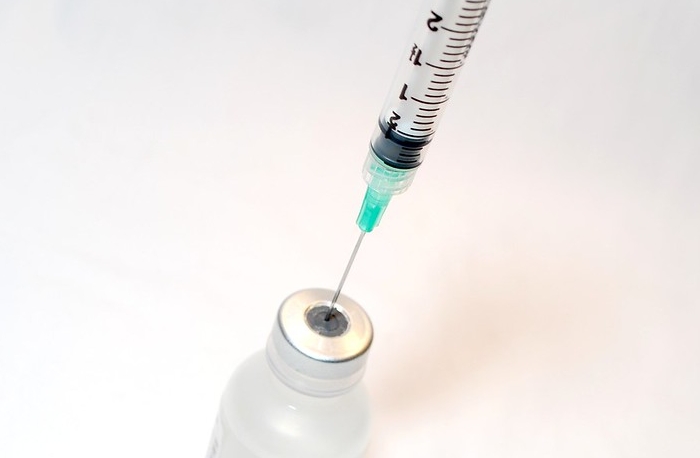By: Davina Kang
Image courtesy of NIAID
In January 2020, the World Health Organization (WHO) announced a known outbreak of an undiagnosed pneumonia-like illness, later identified to be caused by a novel coronavirus, COVID-19 [1]. In March 2020, the [2] U.S. declared a national state of emergency to control the spread of COVID-19 and states started implementing stay-at-home orders. Due to current events, a vast number of health care needs, including preventative care interventions, have gone unmet. In the past few months, social distancing and shelter in place due to the pandemic have made people reluctant to schedule clinical visits in fear of contracting COVID-19 [3].
During the pandemic, childhood vaccinations have dropped significantly producing new healthcare concerns. According to the Centers of Disease Control and Prevention(CDC), pediatric vaccinations plummeted after President Trump declared a national emergency in mid-March leaving many children vulnerable to vaccine-preventable disease[3]. Recent reports from the CDC have shown that from mid-March to mid-April, vaccine ordering decreased by 2.5 million doses for non-influenza vaccines and 250,000 less MMR vaccinations in comparison to 2019 [3].
As states across the U.S. have started to relax stay-at-home orders and begin to return to normal routines, many medical and public health professionals are worried about a surge in vaccine-preventable disease admist the COVID-19 pandemic. The risk of vaccine-preventable illness outbreaks may have been diminished over the past months as most people were following social distancing and stay-at-home orders, but now that [4] U.S. moves into easing restrictions, there is severe concern for transmission of vaccine-preventable diseases [3]. Prior to the COVID-19 pandemic, a decrease in childhood immunization rates caused a resurgence and outbreak of measles in the U.S. and a state of emergency was declared in New York City and Washington [5][6].
On time vaccination from birth to adolescence is essential as it provides immunity to many transmissible diseases. It is vital that parents keep their child’s vaccinations up-to-date to prevent the spread of a vaccine-preventable disease, particularly during the COVID-19 global pandemic.
Recommended Vaccination Schedule by Age:
For full immunization schedules and information, please visit https://www.cdc.gov/vaccines/vpd/vaccines-age.html
Birth:
- Hepatitis B (HBV) – 1st dose
Infants: 2-9 months old
- Hepatitis (HBV) – 2nd dose + 3rd Dose
- Diphtheria, Tetanus, Whooping Cough (DTaP)
- Haemophilus Influenzae Type B (Hib)
- Polio (IPV)
- Pneumococcal (PCV)
- Rotavirus (RV)
- Influenza (flu)
Toddlers: 1-4 years old
- Chickenpox (Varicella)
- Diphtheria, Tetanus, Whooping Cough (DTaP)
- Haemophilus Influenzae Type B (Hib)
- Measles, mumps, rubella (MMR)
- Polio (IPV)
- Pneumococcal (PCV)
- Hepatitis A (HepA)
- Hepatitis B (HepB)
- Influenza (flu)
Adolescents: 5-10 years old
- Diphtheria, Tetanus, Whooping Cough (DTaP)
- Polio (IPV)
- Measles, mumps, rubella (MMR)
- Chickenpox (Varicella)
- Meningococcal conjugate vaccine
- HPV vaccine
- Tdap
- Influenza (flu)
Teenagers: 11-18 years old
- Influenza (flu)
Information for Vaccination Services:
HealthMap Vaccine Finder is a free, online service created by Boston Children’s Hospital Computational Epidemiology team, where users can search for locations such as clinics, pharmacies, and health departments for information about vaccination services. To learn more, please visit https://vaccinefinder.org/
References
[1] https://www.who.int/news-room/detail/27-04-2020-who-timeline—covid-19
[2] https://www.fema.gov/news-release/2020/03/13/covid-19-emergency-declaration
[3] https://www.cdc.gov/mmwr/volumes/69/wr/mm6919e2.htm
[4] https://www.nytimes.com/interactive/2020/us/states-reopen-map-coronavirus.html
[5] https://www1.nyc.gov/assets/doh/downloads/pdf/press/2019/emergency-orders-measles
[6] https://www.governor.wa.gov/sites/default/files/proclamations/19-01%20State%20of%20Emergency.pdf


